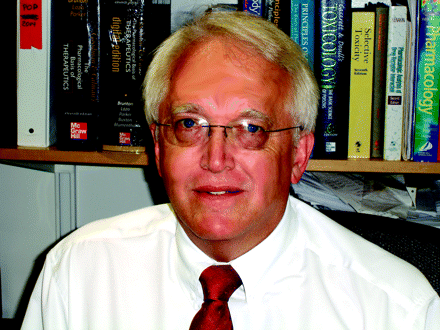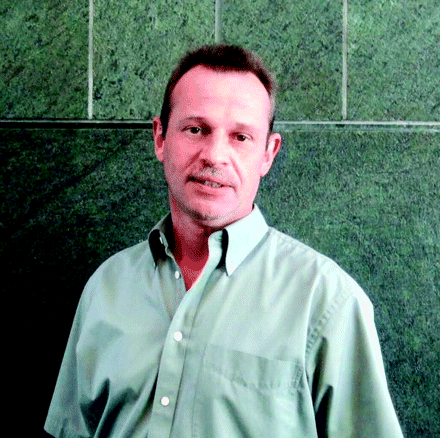Who’s Afraid of Ligand–Macromolecule Interactions in Complex Physiological Systems?
Over the past ten to fifteen years, there has been a marked decrease in the production of new, safe, and efficacious drugs. This decrease has occurred despite the promised impact of the human genome project and phenomenal investments made by the pharmaceutical industry in high-throughput technologies associated with recombinant protein bioassays and combinatorial chemistry. The dilemma was discussed in Innovation or Stagnation, a white paper that came from the FDA in 2004 (1). This report revealed that, during the 1993–2003 period, the number of new medical entities (NMEs) entering early-phase clinical trials increased significantly (i.e., an 85% increase in phase I and a 90% increase in phase II trials). Although research productivity increased along with the investment in the human genome project and high-throughput technologies, the number of new drugs approved for therapeutic use has nevertheless waned.
To suggest that the failure to turn NMEs into products lies in the hands of those charged with managing the development process would, however, be a mistake. NMEs largely fail as the collective consequence of inadequate safety, distribution, and efficacy—challenges shared by both the spheres of discovery and development. Indeed, faced with expensive failures in clinical trials and increased regulatory requirements, the pharmaceutical industry is evolving strategies that place an increasing emphasis on pre-clinical studies that can better predict the likelihood of success in the development process.
Who Needs Pharmacologists?
The current buzz words in project team meetings within the pharmaceutical industry are “biomarkers,” “translational medicine,” and “de-risking.” This new vocabulary has arisen after a period in which new robotic laboratories for studying compounds at the protein or cellular level have often been introduced at the expense of the systems assay laboratory. An unfortunate side effect of this heavy emphasis on molecular and combinatorial approaches has manifested itself as a significant, nation-wide reduction in advanced programs that had previously trained scientists to perform in vivo pharmacology experiments.
In practice, the current industry strategy amounts to a return to emphasizing the traditional role of the pharmacologist, with a demand for more in vivo animal experiments to provide target validation, confirm candidate drug efficacy and safety, and establish detailed knowledge of the relationships among dose, plasma concentration, and pharmacodynamic effect. Unsurprisingly, therefore, attention has begun to focus on the coincidental decline in the number of pharmacologists with in vivo experimental and analytical skills who are engaged in drug discovery and development [see, for example, (2)]. In this vein, the National Institutes of Health have held a national competition to provide funding for four short summer programs to partially redress the training issue. These programs (University of Nebraska, Michigan State, University of North Carolina, and UC San Diego) offer two to three weeks of intensive training in the use of in vivo systems in areas such as cardiovascular pharmacology, nociception, imaging, and pharmacokinetics [see Table 1⇓ and (3)].
NIGMS-Sponsored Short Courses in Systems Pharmacology
Although research productivity increased along with the investment in the human genome project and high-throughput technologies,
the number of new drugs approved for therapeutic use has nevertheless waned.
Based on our experiences in academia and industry, and through our varied participation in the short courses themselves, we believe that the NIH initiative recognizes two challenges that face the pharmacological community. The first is the struggle of industrial and academic institutions to find and hire biologists who are equipped with the pharmacological skills to translate work on new molecular targets into well-characterized clinical agents. The second challenge is best construed as an opportunity for traditionally trained drug discovery scientists to pass on their enthusiasm and experiences in pharmacology to young scientists.
What Is The Role Of The Modern Pharmacologist?
Sir James Black, the Nobel-winning “pharmacological tool-maker” (4), has likened the pharmacologist’s bioassays, used to assign biological properties to compounds, to analytical machines used by the chemist to assign physical chemical properties to compounds. He argued that if the primary role of the drug discovery medicinal chemist is to optimize the pharmaceutical properties of lead compounds by structural modification, then the role of the pharmacologist is to select, develop, and apply bioassays to provide timely, relevant, and robust data that may guide the medicinal chemist’s organic syntheses. Until recombinant protein expression technologies became available in the 1980s, bioassays were predominantly based on the quantification of efficacy, safety, and distribution of drugs in intact physiological systems. The new technologies provided increasingly simplified and homogeneous assay systems. As a result, the pharmacologist can now study the effects of investigational drugs across a full range of assays, from the purified molecular target to populations of patients. Moving up the bioassay hierarchy from pure protein towards patient populations, however, adds levels of complexity: it takes longer to obtain results in physiological systems and whole organisms, and in such systems the comparisons of molecules are increasingly complex.
In the US, PhD programs in the biomedical sciences have increasingly dropped requirements for in vivo training, physiology,
and pharmacology.
Effects of a drug in a patient or experimental animal are based not only on the primary activity of the drug at the molecular target, but also on absorption from the site of administration, distribution to sites of action, and metabolism and elimination (ADME). Furthermore, a drug’s effects and a drug’s utility can be determined or limited by toxicity, by reflexes, by disease processes, and by interindividual variability. In addition, different results may be obtained with chronic versus prolonged administration of the drug [see, for example, (5)]. Several decades’ emphasis on and investment in molecular approaches and technology have promoted training in molecular systems and high-throughput technologies. Concurrently, however, the fraction of trainees working in complex physiological systems and learning to deal with issues such as ADME seems to have declined.
...a daunting and future goal of systems pharmacologists is to devise experimental and theoretical methods to predict effects
of NMEs...
Where do young scientists learn about such physiological and pharmacological variables? How may trainees gain familiarity with pharmacokinetics, with systems suitable for studies of organ function, or with systems in which pain perception, blood pressure, or other complex physiological variables may be assessed? In the US, PhD programs in the biomedical sciences have increasingly dropped requirements for in vivo training, physiology, and pharmacology. Certain changes in the curriculum are not surprising, given the advances in cellular and molecular biology over the past thirty years. However, as we move into the proteomic era, and as we try to develop and test new pharmaceutical agents, we need scientists who are expert in the biology of more complex systems. Indeed, a daunting and future goal of systems pharmacologists is to devise experimental and theoretical methods to predict effects of NMEs at well-defined protein targets. Such predictions will become more pressing as dosing is extended over periods of years to diverse, aging patient populations with progressive diseases. Such challenges will require understanding of all levels of biological organization, from molecular to organismal.
These statements are not merely hypothetical; the need for systems pharmacologists is palpable. In a recent issue of Molecular Interventions, two of four positions advertised had the following requirements (5):
… expertise in applying quantitative biology and pharmacology in quantifying mechanisms underlying the relationship between
drug concentration and effect at the cellular, tissue, organ and system levels.
… a bench scientist … to plan, execute…, and interpret research of an in vivo pharmacology group dedicated to running biochemical/mechanistic
screening models; proof-of-concept models for target validation; and efficacy models to evaluate discovery lead compounds.
In our view, these types of positions will increase in number. Given the diminishing experience that most graduate and postdoctoral trainees receive in complex in vivo systems, the existence of the four NIH summer courses can be seen as a positive step.
What exactly have the courses achieved?
In their second year, the four courses trained about fifty graduate and postgraduate students, up from forty trained in the first year. The trainees have ranged from first-year graduate students to faculty members. In addition, scientists from the biotech/pharmaceutical industry have participated. Likewise, the courses’ faculties have been drawn from both academia and industry. It is too soon to assess the national impact of these programs, but the student trainees rated the courses among the best they have ever taken, and several participants have affirmed that they will be applying their course experience to their research and in job-seeking. Admittedly, students do not become expert at any single procedure in two to three weeks. But the success of intense programs at Cold Spring Harbor, Woods Hole, and NIH attest to the effectiveness of such short courses.
At the three-week UCSD course, for instance, students receive approximately forty-five hours of lecture and ninety hours of hands-on experience. The students learn the basic biology associated with a system or process such as cardiac hypertrophy: the course includes lectures on topics ranging from receptors and signal transduction of contractile regulation to cellular mechanisms of hypertrophy, altered cardiac function, and adaptive reflex responses. Trainees perform in vivo studies to apply their new knowledge, and examine, for example, mouse models of hypertrophy (i.e., aortic constriction or mini-pump administration of an α-adrenergic agonist in normal and transgenic mice) with echocardiographic assessment of heart size and telemetric assessment of cardiac function.
The course held at the University of Nebraska has similarly drawn faculty from both academia and the pharmaceutical industry. The course is two weeks in duration, with an emphasis on cardiovascular and neuroscience. The key attribute to this program is that students hear from an expert in the field about a subject/model and then move immediately to the lab to put learned principles to the test. Models range from working memory to complex hemodynamic assessments. (A therapeutic dose of extra-curricular activities is administered as well.) The final lecture outlines the drug discovery process—how a pharmacological principle is translated into a useful therapeutic via the use of in vivo data. (See Table for other areas of emphasis.)
In addition to their introduction to practical and marketable information, students in the NIH short courses get to know a small number of experts in the field—experts on whom they may later rely when the need arises. Thus, these summer programs appear to be building a small national and international network of interested individuals with advanced understanding and training in the pharmacological analysis of physiological systems. The true success of these programs will depend on the continuation of connectivity amongst participants. Consideration of the expansion of the content and number of such programs should be part of a national conversation among the NIH, academic scientists, and the biotech/pharmaceutical industry.
Acknowledgments
The authors appreciate the cooperation of the Summer Program Directors (see Table), the support of NIH to the individual summer training programs, and the stimulating interest of the American Society for Pharmacology and Experimental Therapeutics. We are also grateful for the spirit of industry–academia cooperation engendered by these programs and their directors.
- © American Society for Pharmacology and Experimental Theraputics 2006

Laurence L. Brunton, PhD, is Professor of Pharmacology and Medicine at UCSD and editor-in-chief of Goodman & Gilman’s The Pharmacological Basis of Therapeutics. He will serve as director of the short course at UCSD for the third time in 2007.

Bryan F. Cox, PhD, is Director of Integrated Pharmacology at Abbott Labs. He has served on the faculty of the summer short course at the University of Nebraska Medical Center.

Nigel Shankley, PhD, is a Senior Research Fellow at the new Johnson & Johnson Pharmaceutical Research & Development facility in La Jolla. Prior to arriving in La Jolla, he had embarked on a twelve-month internship in pharmacology with Sir James Black in Therapeutic Research & Development at The Wellcome Research Laboratories in Beckenham, UK—an “internship” that turned out to last over two decades. Earlier this year, he participated in the short course at UCSD (Systems Pharmacology and Translational Biology).



